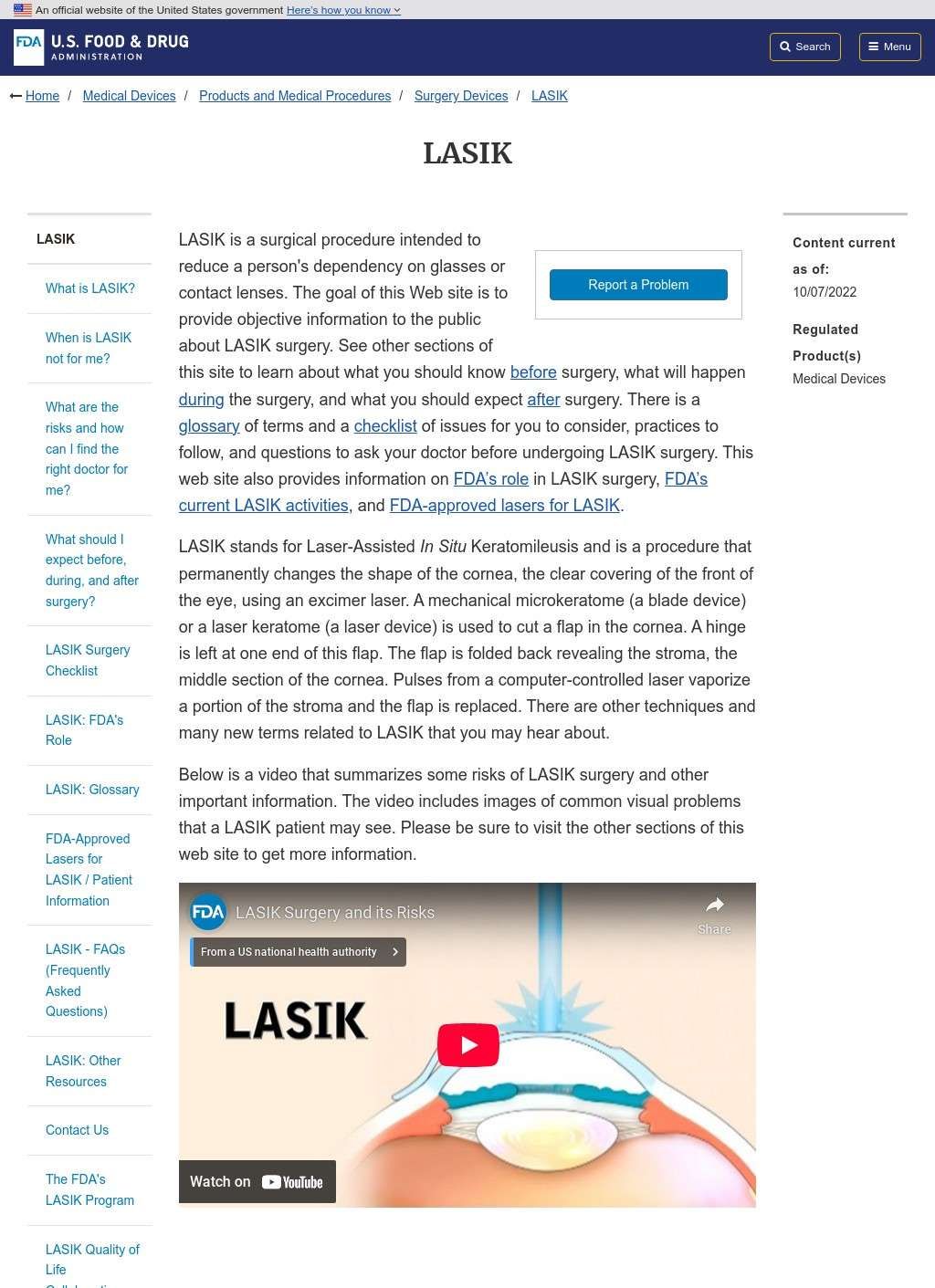The U.S. Food and Drug Administration serves as the critical gatekeeper for eye surgery technologies, maintaining rigorous standards that protect patients while enabling innovation in ophthalmic surgical devices. Through its Center for Devices and Radiological Health, the FDA evaluates and monitors every laser system, surgical instrument, and implantable device used in eye surgery, ensuring that only safe and effective technologies reach American operating rooms. This comprehensive oversight encompasses the entire lifecycle of surgical devices, from premarket evaluation through post-market surveillance, creating a regulatory framework that has become the global gold standard for ophthalmic device safety.
LASIK and refractive surgery oversight represents one of FDA's most visible roles in ophthalmology, with dedicated resources helping patients understand both benefits and risks of vision correction procedures. The agency maintains extensive databases of approved laser systems, tracking their specific indications, treatment parameters, and reported outcomes. Each approved system undergoes rigorous clinical testing to demonstrate safety and effectiveness for specific refractive errors and patient populations. FDA's LASIK website provides objective information about candidacy criteria, potential complications, and realistic outcome expectations. The agency also investigates adverse events, issues safety communications when needed, and works with manufacturers to improve device performance based on real-world experience.
Medical device classification and approval pathways established by FDA determine how new surgical technologies enter clinical practice. Innovative devices undergo premarket approval processes requiring extensive clinical data demonstrating safety and effectiveness. The De Novo pathway enables novel low-to-moderate risk devices to establish new regulatory categories. The 510(k) clearance process allows devices substantially equivalent to existing products to reach market more efficiently. FDA's breakthrough device designation expedites development of technologies addressing unmet clinical needs in eye surgery. These varied pathways balance innovation encouragement with patient protection, ensuring that beneficial technologies reach surgeons quickly while maintaining safety standards.
Clinical trial oversight by FDA ensures that studies of new surgical devices and techniques meet ethical and scientific standards protecting patient participants. The agency reviews trial protocols, monitors safety data, and ensures proper informed consent procedures. FDA guidance documents help researchers design studies that generate meaningful evidence about surgical outcomes. Investigational device exemptions allow promising technologies to be studied in controlled clinical settings before general approval. The agency's collaborative approach works with researchers and manufacturers to address safety concerns while advancing beneficial innovations. This clinical trial infrastructure has enabled development of revolutionary technologies like artificial retinas and adjustable intraocular lenses.
Post-market surveillance systems maintained by FDA continuously monitor the safety of approved surgical devices throughout their commercial lifetime. The Medical Device Reporting system requires manufacturers, facilities, and importers to report adverse events and device malfunctions. The MAUDE database makes these reports publicly accessible, allowing surgeons and patients to research real-world device performance. FDA can mandate post-approval studies for devices requiring long-term safety monitoring. When safety issues emerge, the agency coordinates recalls, issues safety alerts, and works with manufacturers on corrective actions. This comprehensive surveillance ensures that surgical devices maintain safety standards throughout their use in clinical practice.
Regulatory science initiatives at FDA advance understanding of how surgical devices interact with ocular tissues and impact visual outcomes. The agency funds research into biocompatibility testing, optical modeling, and surgical simulation methods that improve device evaluation. FDA scientists collaborate with academic researchers to develop better testing protocols for new device categories. Guidance documents translate this research into practical standards that manufacturers can follow. The agency's laboratory facilities conduct independent testing when needed to verify device performance claims. This scientific foundation ensures that regulatory decisions reflect the latest understanding of ocular biomechanics and surgical outcomes.
International harmonization efforts led by FDA work toward consistent global standards for eye surgery devices, facilitating innovation while maintaining safety. The agency participates in international regulatory forums, sharing best practices and learning from other countries' experiences. Mutual recognition agreements enable efficient device approval across multiple markets. FDA's influence shapes global standards for clinical trial design, manufacturing quality systems, and post-market surveillance. These international collaborations benefit American patients by bringing beneficial technologies to market faster while ensuring consistent safety standards worldwide.
For surgeons and patients navigating eye surgery decisions, FDA provides authoritative resources clarifying device capabilities and limitations. The agency's databases allow searches for specific approved devices, their indications, and reported adverse events. Educational materials explain how to evaluate surgical options and understand risk-benefit tradeoffs. FDA's MedWatch system enables direct reporting of device problems by healthcare providers and patients. Contact resources include dedicated phone lines for device-related inquiries, online reporting systems for adverse events, and comprehensive web portals providing access to device databases, safety communications, and regulatory guidance. The Division of Ophthalmology within FDA's Office of Specialty Medicine provides specialized expertise ensuring that regulatory decisions reflect the unique aspects of eye surgery and visual outcomes.
